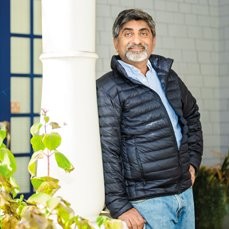Seed Capital
1Mby1M Virtual Accelerator Investor Forum: With Susan Mason of Aligned Partners (Part 3)
Sramana Mitra: If you do that capital efficiently and exit into a large company with the channel that has all those different verticals that they can access, you could conceivably broaden that portfolio and the acquiring company then gets a lot of leverage out of that platform.
Susan Mason: Indeed. What we’ve seen is that the companies that get acquired tend to be very successful acquisitions. You don’t see these big acquisitions that, invariably, fail within large corporations. Our companies get acquired typically between $80 million to $100 million in less than six years. The revenue run rate at that kind of sweet spot position is sub-$10 million. It is a textbook strategy and we run that on every one of our companies. >>>
215th 1Mby1M Entrepreneurship Podcast With Mark Hasebroock, Dundee Venture Capital
Mark Hasebroock is Founder at Dundee Venture Capital, based in Omaha, Nebraska. The firm invests in the Midwest, likes small, capital-efficient deals and are open to early exits.
Podcast: Play in new window | Download
Subscribe: Apple Podcasts | Android | Google Play | Stitcher | TuneIn | RSS
1Mby1M Virtual Accelerator Investor Forum: With Padmaja Ruparel of Indian Angel Network (Part 1)

Responding to a popular request, we are now sharing transcripts of our investor podcast interviews in this new series. The following interview with Padmaja Ruparel was recorded in December 2017.
Padmaja Ruparel is Co-founder, Indian Angel Network (IAN), and Founding Partner, IAN Fund. She has been a key player in shaping India’s still somewhat nascent startup eco-system. Those interested in Indian startups and the funding trends should read on.
Sramana Mitra: Tell us about Indian Angel Network and the journey you’ve had building it. What is going on there now? What is working? What is not working? What have you learned through this process? >>>
1Mby1M Virtual Accelerator Investor Forum: With Sunil Bhargava of Tandem Capital (Part 2)
Sramana Mitra: The question is more about trends. In the companies that you’ve seen, what are people working on that are interesting?
Sunil Bhargava: It’s extremely broad. We have companies in the construction space. We have companies in the food space. We have companies in the transportation space. Now you hear a lot about Blockchain. I think it’s a very wide spectrum. The best way to get a better sense of the breadth of the companies is to go and look at the variety of different types of problems that are being addressed by a single YC class. You look at that. There are a hundred companies in there. There are B2B and B2C. >>>
1Mby1M Virtual Accelerator Investor Forum: With Susan Mason of Aligned Partners (Part 2)
Sramana Mitra: Very much in alignment with the philosophy we practice here is capital-efficient entrepreneurship. We encourage our entrepreneurs to bootstrap as much as possible and do things with not too much money such that you end up with not very much in wealth creation. You raise a lot of money and perhaps build to a certain amount of scale but don’t really get exits to justify that level of fundraising, which happens rampantly in the industry.
213th 1Mby1M Entrepreneurship Podcast With Alan Chiu, XSeed
Alan Chiu is Partner at XSeed, a seed-focused venture fund based in Silicon Valley. Alan talks about the level of risk his firm is willing to take and under what circumstances.
Podcast: Play in new window | Download
Subscribe: Apple Podcasts | Android | Google Play | Stitcher | TuneIn | RSS
1Mby1M Virtual Accelerator Investor Forum: With Sunil Bhargava of Tandem Capital (Part 1)

Responding to a popular request, we are now sharing transcripts of our investor podcast interviews in this new series. The following interview with Sunil Bhargava was recorded in October 2017.
Sunil Bhargava, Founder and Managing Partner, Tandem Capital, helped us explore the difference of post-seed versus pre-Series A financing.
Sramana Mitra: Tell us about Tandem. What is the focus of the firm? How big is the fund? What size investments are you making?
Sunil Bhargava: We are currently investing out of our third fund. It’s a $100 million fund. Our first check is usually $1 million >>>
388th Roundtable Recording on March 1, 2018: With Gary Little, Canvas Ventures
In case you missed it, you can listen to the recording:
